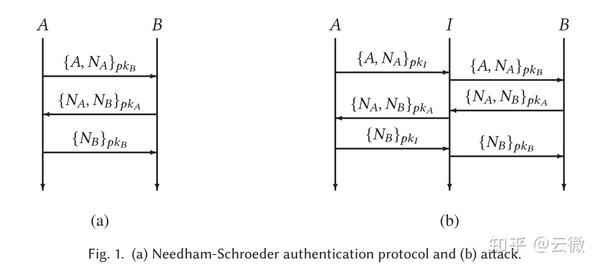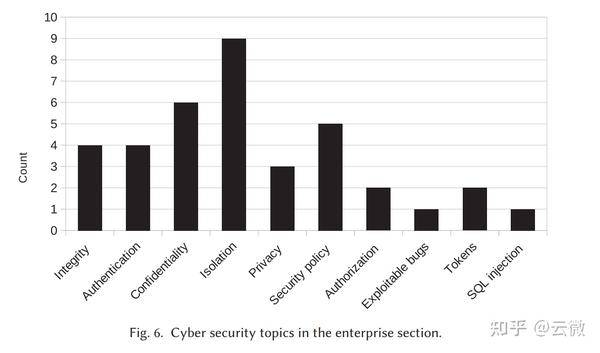review: Advances in Userspace-Kernel Interaction in Operating Systems
Introduction
Userspace-kernel interaction is a key performance determinant in operating systems, particularly when considering the needs of modern distributed systems and datacenter environments. Traditional methods, like system calls, introduce significant overhead, leading to inefficiencies in I/O processing, context switching, and resource management. As applications demand higher throughput, lower latency, and more scalable solutions, researchers have explored novel approaches to optimizing the boundary between userspace and kernelspace.
This literature review explores four key developments aimed at improving userspace-kernel interaction: (1) optimizing dataplane operations to reduce kernel involvement, (2) speculative execution to hide latency in distributed systems, (3) kernel-bypass techniques for microsecond-scale I/O, and (4) modularizing kernel functions to enhance flexibility and performance. These approaches reflect ongoing efforts to redesign how operating systems manage interactions between userspace and kernelspace, providing new pathways for improved performance in modern computing.
Optimizing Dataplane Operations for Reduced Kernel Involvement
The first major strategy focuses on minimizing kernel intervention in network-related operations, particularly in high-performance environments like datacenters. Belay et al.’s IX operating system (2014) introduced a novel approach by decoupling the control plane and dataplane, effectively limiting the need for userspace-kernel context switching during network packet processing. IX operates primarily in userspace, ensuring efficient packet handling without the overhead of traditional system calls. This zero-copy API allows for efficient data movement without the typical latency penalties incurred by frequent transitions between userspace and kernelspace.
In comparison, conventional OS architectures like Linux are significantly less efficient in handling network I/O due to frequent kernel involvement. The performance of IX, which demonstrated a 10× improvement in throughput over Linux and a 1.9× improvement over mTCP, showcases the benefits of reducing kernel interaction in dataplane operations.
However, IX’s reliance on specialized APIs and architecture means that it requires changes in application design to fully utilize its benefits, which might not always be feasible in legacy systems or applications that rely on POSIX-compliant system calls. While it offers high performance in specific use cases, it lacks the broad applicability of traditional systems like Linux, which provides general-purpose versatility at the expense of optimal performance in specialized scenarios.
In conclusion, IX demonstrates the power of reducing kernel involvement in specific environments like datacenters but may not be a universal solution due to its reliance on custom implementations. In contrast, Linux remains dominant for its flexibility across a wide range of applications, though with higher latency and inefficiencies.
Speculative Execution to Hide Latency in Userspace-Kernel Communication
A different approach to optimizing userspace-kernel interaction focuses on improving I/O performance through speculative execution. Soares et al.’s Speculator framework (2009) introduced speculative execution to distributed file systems like NFS and AFS, allowing processes to continue while awaiting the results of kernel I/O operations. By checkpointing the system state and predicting the outcomes of I/O tasks, Speculator can reduce latency without sacrificing correctness. If the prediction proves incorrect, the system simply rolls back to the checkpoint and re-executes the task.
This speculative execution mechanism is highly effective in reducing the latency associated with remote I/O operations, especially in high-latency distributed environments. Compared to traditional synchronous I/O approaches, Speculator improves throughput by as much as 2.5× in NFS-based environments. The introduction of speculation also offers significant improvements in scenarios where network latency is a major bottleneck.
In contrast, traditional systems like NFS and AFS are inherently synchronous, waiting for confirmation from remote servers before proceeding. This design ensures data consistency but at the cost of introducing significant latency, particularly in distributed environments with long round-trip times.
n conclusion, While speculative execution offers a highly effective solution for reducing I/O latency, it is not without risks. The reliance on correct predictions may introduce complexity and potential performance penalties in the event of incorrect speculation, especially in environments where I/O patterns are less predictable. Additionally, speculative execution might not be suitable for all use cases, especially those requiring strict determinism or minimal state rollback.
Kernel-Bypass Techniques for Microsecond-Scale I/O Processing
The third area of innovation bypasses the kernel entirely for I/O processing in environments where microsecond-scale latency is crucial. Demikernel, a solution presented in 2021, introduces a portable datapath OS for microsecond-scale I/O, bypassing the kernel to directly interface with hardware devices. This approach is especially beneficial for time-sensitive applications, such as high-frequency trading, where the overhead of kernel intervention can make a significant difference in performance.
Kernel-bypass mechanisms like those in Demikernel allow userspace applications to communicate directly with hardware through devices like RDMA and DPDK. In contrast to traditional I/O processing, which incurs the overhead of system calls, Demikernel’s architecture minimizes this interaction, resulting in nanosecond-scale overheads. The system’s centralized coroutine scheduler also optimizes memory management and balances I/O and application work efficiently.
Compared to traditional kernel-mediated I/O processing, which can result in significant overhead due to context switching, Demikernel’s kernel-bypass techniques represent a marked improvement. However, one limitation is that kernel-bypass systems often require specific hardware support, making them less universally applicable than traditional methods. Furthermore, while bypassing the kernel can improve I/O performance, it may sacrifice certain levels of security and fault tolerance, as the kernel’s mediation is often crucial for these aspects.
Modular Microkernel Designs for Flexible Userspace-Kernel Interaction
Finally, we examine the potential of modular kernel designs to improve userspace-kernel interactions by reducing the performance overhead associated with traditional monolithic kernel architectures. The modular microkernel approach (2009) advocates for the separation of core OS services into independent modules, which allows for more efficient communication between userspace and kernelspace by isolating performance-critical tasks.
In a traditional monolithic kernel, all core services—such as memory management, file systems, and device drivers—are bundled together, which increases the cost of I/O processing and userspace-kernel transitions. By contrast, microkernel architectures modularize these services, enabling more efficient handling of high-concurrency workloads. This approach reduces the need for frequent context switching and allows for dynamic scaling of kernel modules based on the needs of the application.
The evaluation of modular microkernel designs showed that they significantly reduced I/O processing times in high-concurrency environments, outperforming monolithic kernels in terms of scalability and flexibility. However, modular designs also introduce complexity in system management and debugging, as more components must be orchestrated in harmony.
In conclusion, While microkernel architectures offer improved flexibility and scalability, they are more complex to design, implement, and maintain compared to monolithic kernels. The trade-off between flexibility and complexity is a key consideration for system designers, depending on the intended application environment.
Conclusion
The interaction between userspace and kernelspace is a critical factor in determining operating system performance, especially in high-concurrency and low-latency environments. This literature review has explored four major advancements aimed at optimizing this interaction: (1) optimizing dataplane operations to reduce kernel involvement, (2) using speculative execution to hide latency, (3) implementing kernel-bypass techniques for microsecond-scale I/O, and (4) adopting modular kernel designs to improve flexibility and performance.
Each approach offers valuable insights into how the traditional boundaries between userspace and kernelspace can be redefined to meet the needs of modern computing environments. While these solutions offer significant performance improvements, they come with trade-offs in terms of complexity, hardware dependency, and application-specific applicability. As computing systems evolve, the need for tailored solutions that balance these trade-offs will remain a critical challenge for researchers and system architects.
References
- Belay, A., Prekas, G., Klimovic, A., Grossman, S., Kozyrakis, C., & Bugnion, E. (2014). {IX}: a protected dataplane operating system for high throughput and low latency. In 11th USENIX Symposium on Operating Systems Design and Implementation (OSDI 14) (pp. 49-65).
- Nightingale, E. B., Chen, P. M., & Flinn, J. (2005). Speculative execution in a distributed file system. ACM SIGOPS operating systems review, 39(5), 191-205.
- Zhang, I., Raybuck, A., Patel, P., Olynyk, K., Nelson, J., Leija, O. S. N., … & Badam, A. (2021, October). The demikernel datapath os architecture for microsecond-scale datacenter systems. In Proceedings of the ACM SIGOPS 28th Symposium on Operating Systems Principles (pp. 195-211).
- Baumann, A., Barham, P., Dagand, P. E., Harris, T., Isaacs, R., Peter, S., … & Singhania, A. (2009, October). The multikernel: a new OS architecture for scalable multicore systems. In Proceedings of the ACM SIGOPS 22nd symposium on Operating systems principles (pp. 29-44).



























